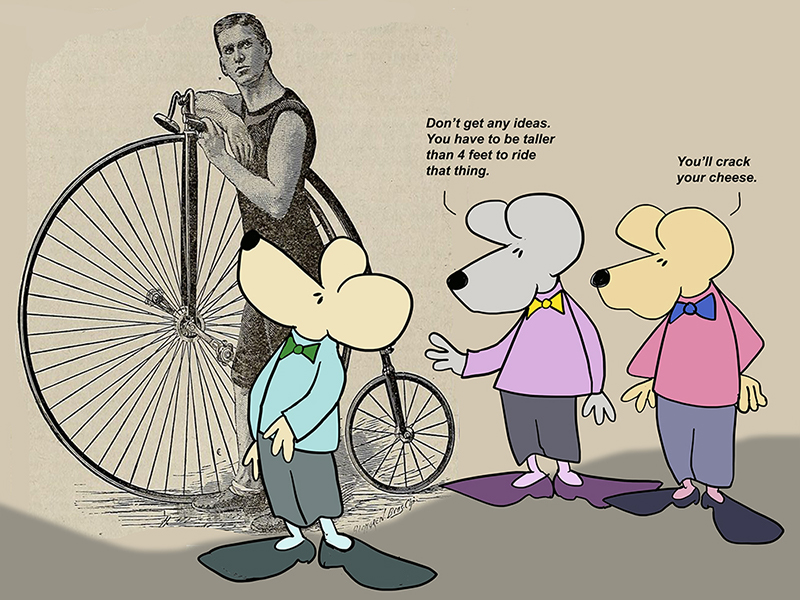It was a rite of passage as a child. That day, when we sat on our seats, tottering back and forth, and began to peddle, the very first time. Keeping our balance without our training wheels. Oh, the joy of learning to ride a bike.
As with any great joy in life, along with the highs, come the lows. One minute we were flying like the wind, peddling with all our might, and the next? There was blood dripping down our legs and a handful of gravel implanted in our knees.
From the playing card pinned to make the noise in the spokes of our wheels to ringing bells and handle bar streamers. All of this was ours.
Some of us continued to ride bikes as adults. In college, or as sport, perhaps as exercise, or hobby.
But the way the bicycles started was a bumpy road. It was on this date, May 21, 1819, that the first bicycles were introduced in the United States, in none other than New York City. They were called Swift Walkers and looked as they sound, a version of a modern-day without pedals. One literally had to walk the bike to move the thing along.
Before then, the first invention is a little disputed. The bicycle took different forms. A German baron named Karl von Drais made the first major development. He came up with a steerable, two-wheeled contraption in 1817. The thing was known by many names, including the “velocipede,” “hobby-horse,” “draisine” and “running machine.”
It had two pedals attached to the front axle of a larger wheel. This early invention has given Drais the distinction of being the father of the bicycle. But the bicycle as we know it morphed into many things throughout the 19th century, thanks to the work of several different inventors.
Drais’s velocipede was only in the headlines for a brief period. It quickly fell out of popularity. The great poet John Keats made fun of the invention, calling it the “nothing of the day.”
There were a lot of guys all throughout Europe coming up with different ideas. A lot of them were French inventors, beginning in the 1860s. Those early prototypes still had the pedals attached to the front wheel. These first machines were also known as “boneshakers” for their rough ride.
Two inventors, Eugène Meyer and James Starley, later introduced new models that had that incredibly oversized front wheel. These things were called “penny-farthings” or “ordinaries,” and they became all the rage during the 1870s and 1880s. But they were so high off the ground. Even so, they helped give rise to the first bicycle clubs and competitive races.
Sure enough, the penny-farthing helped bring bicycling into the mainstream. But, the problem still was its four-foot-high saddle which made it too dangerous for most to ride.
That finally changed in 1885. Another Englishman, John Kemp Starley, who was the nephew of James Starley, perfected a “safety bicycle.” This is the bike that looks like today’s bikes. Its design featured equal-sized wheels and a chain drive. Then came things like brakes and good tires.
Those two-wheeled wonders. I had hand-me-down bikes for most of my childhood, and that was fine by me. I felt like I was flying when I was on my bike. Today, riding a bike is a bit of a lesson in humility. It always feels like I’m at the bottom of a hill.
===========
“Life is like riding a bicycle. To keep your balance you must keep moving”
— Albert Einstein
==========
“Crashing is part of cycling as crying is part of love”
— Johan Museeuw
==========
“If you surrendered to the air, you could ride it.”
— Toni Morrison
=========
Bicycle. The wheels go round and round.
